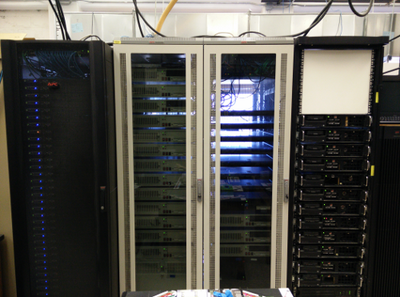Main Page
System Administrators
- Main contact: Alex Barnes, barnes at phys.uconn.edu, Physics P-403
- Dr. Richard Jones, richard.t.jones at uconn.edu, Physics P-411
Usage Policy
Cluster users adhere to the same usage policies as UCONN which can be found here
A former member of the department can use the cluster only if the jobs submitted are directly related to a collaboration with a current member of the department.
Security
All users must have SECURE passwords. Hackers regularly attempt to gain access to the cluster through users' accounts. We have adopted an additional security measure to protect our users:
In order to connect to stats.phys.uconn.edu, all users must first connect to a UConn computer and then ssh to stats.phys.uconn.edu. For anyone trying to access the cluster offsite and doesn't know a UConn computer to connect to, please contact your advisor/collaborator.
Must Read Before Connecting to the Cluster
- Cluster Overview
- How to Obtain a Cluster Account
- How to Connect to the Cluster and What Program to Use
Submitting a Job
- How to Submit a Job
- Example Jobs
- How to Monitor Jobs
- How to Transfer Files
- Job and File Storage Space
Problems/Questions/Requests
- If you encounter any problems, or have a question that is beyond the scope of this wiki, please e-mail Alex Barnes (barnes at phys.uconn.edu).
- If you need a specific version of software, please e-mail the system administrators and include:
- the specific version number
- if other users require the current version on the cluster
Current Status
Current available resources and their utilization may be monitored using:
- Cluster load summary - for a simple summary of cluster resource load. This can also be used to see if the cluster is down.
Acknowledgement for Papers
Part of the computation was done on the Beowulf cluster of the Department of Statistics, University of Connecticut, partially financed by the NSF SCREMS (Scientific Computing Research Environments for the Mathematical Sciences) grant number 0723557.
